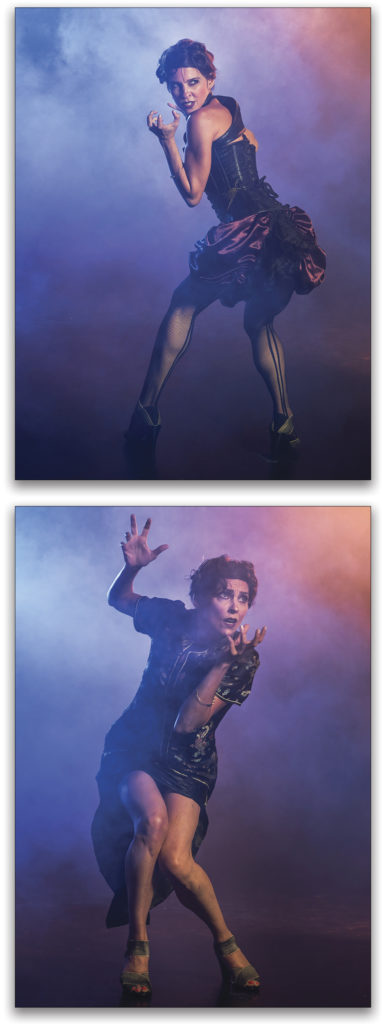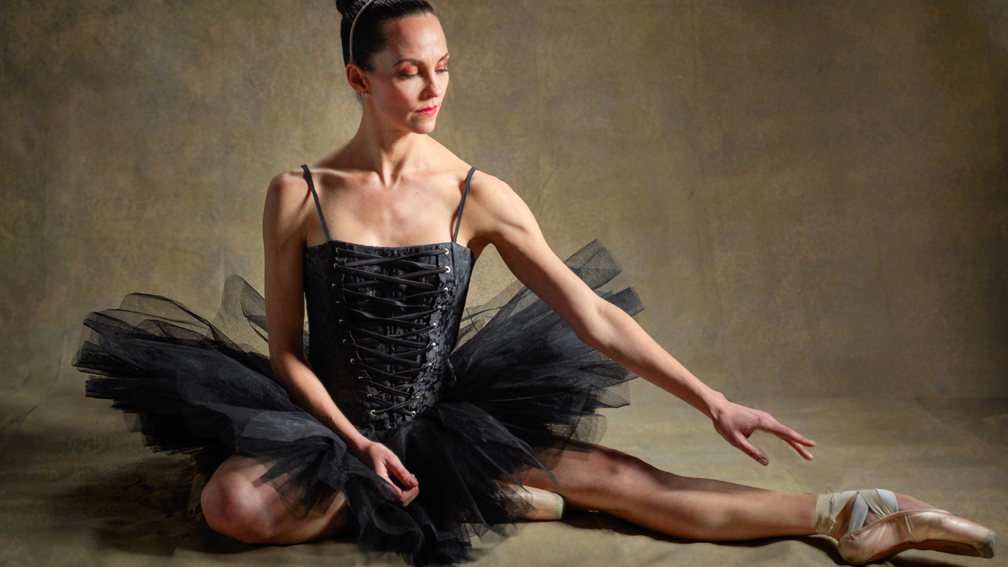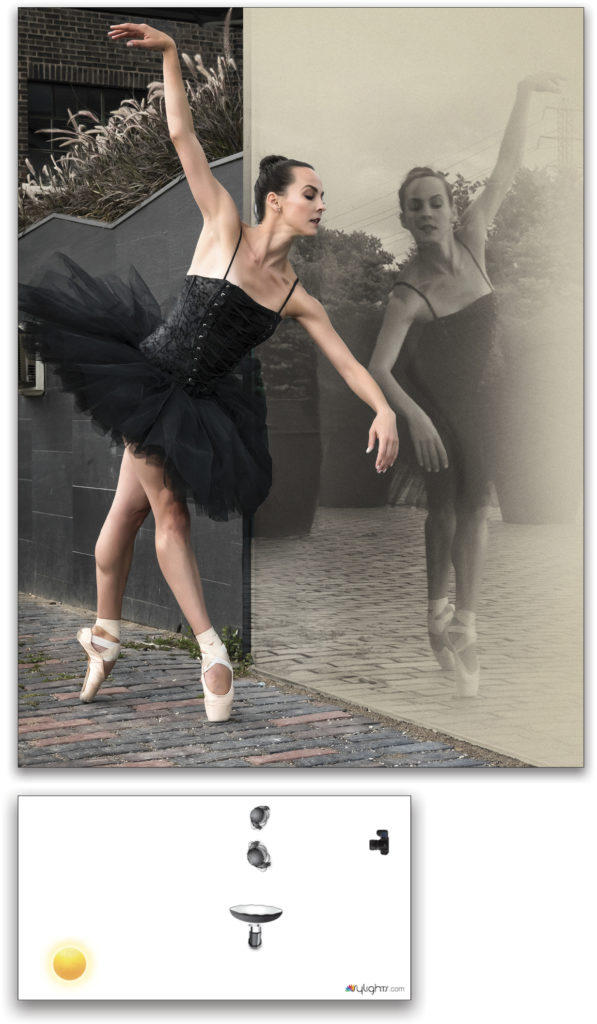Back at the beginning of February this year, I had just returned from a month in Shropshire, U.K., where I was on holiday after the busiest three months I’d ever had shooting three different TV series. Much to my delight, I had a call from Sarah Murphy-Dyson, a dancer I’d never met, who said she liked my work and wanted to get together to do a photo session and was open to ideas. I new little of her past experience until I read her CV.
The following is from Sarah’s bio: “Gemini Award winner Sarah Murphy-Dyson was a First Soloist with The Royal Winnipeg Ballet Company, principal dancer with Alberta Ballet, and an original cast member of the North American premiere of Dirty Dancing…. Sarah has co-starred on Suits (NBC) and 12 Monkeys (SyFy)…and now lives in Toronto (and a whole lot more which I left out for this article).
This chance encounter has led to two amazing days: one winter day in a studio and, more recently, at the Dancemakers theatre in the Distillery District (Toronto). I love to shoot in Dancemakers, because I can make it completely black inside so it’s much easier to control the light.
I shot most of this work with the new Nikon D850 (the best new DLSR on the planet IMO), but also had a loaner Phase One Trichromatic back attached to an XF body for the really colorful dance photos with the smoke machine at the end of this article. I also used all Profoto lighting (D1, D2s, B1, and a portable B2 pack for strobes), plus an assortment of modifiers, flags, white bounce boards, a Profoto OCF Magnum Reflector, a rolling light stand, and some Manfrotto and C stands.
My team included my assistant, Morgan Harris, and makeup artist, Gelareh Kamazani, who are both amazing in their skill and enthusiasm. In this article, I’ll detail the equipment I use in each shot as well as provide lighting diagrams.
Day One: In the Studio
The photo here was set up on a Sue Bryce canvas backdrop with a one-light setup using a large Profoto umbrella with a front diffuser and a Profoto D2 monolight attached—all on a rolling light stand. At camera left, I set up a white bounce board to soften the shadows. I recently became keen on this style of background because I feel it creates a more artistic look to the photograph, somewhat in the style of the Old Dutch Masters painters.
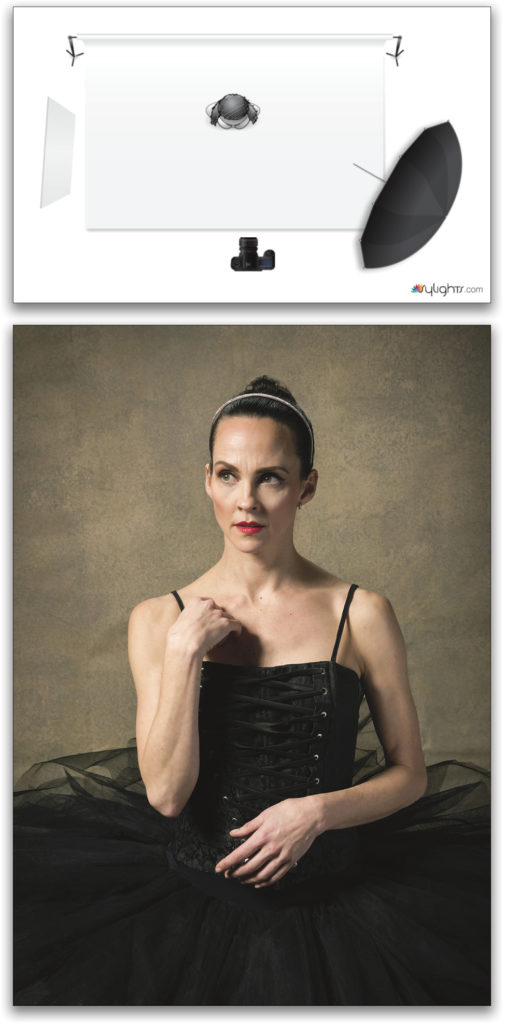
Mixing Window Light
During the first photography session, I wanted to mix some window light with strobe to create a retro look in a 30s and 40s low-key style. The west-facing window in the studio had afternoon sunlight pouring in, which was going to be my key light. I needed to diffuse the light, so I attached an 8×8’ diffuser, better known as a “silk,” to two light stands, which completely covered the window and created a softer light. I was intent on having a light on her dark hair, so I used a gridded Profoto Magnum Reflector attached to a B1. Since the background was black muslin, my goal was to have light on the top of her head with a bit of spill down her hair to create some separation.
Sarah was seated diagonally to the window so that I could get shadow detail on the foreground (left side of her face, camera right). The light was still pretty hard coming in the window, so I did some retouching, and I was happy with the outcome.
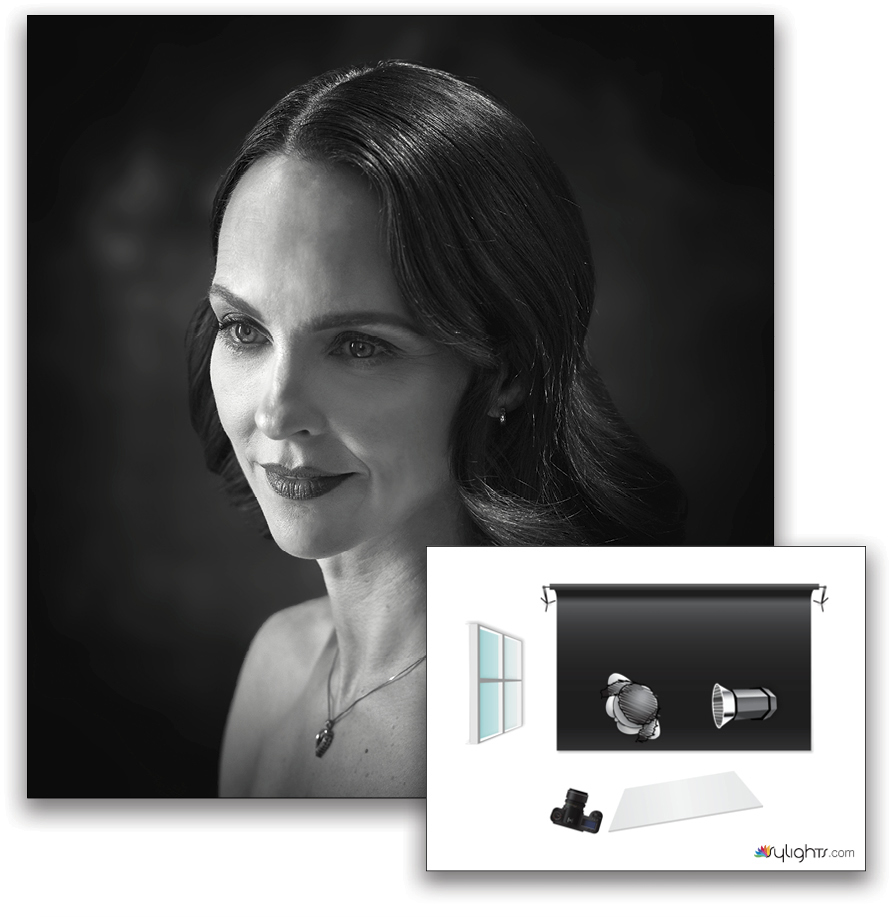
Creating a Story
Delving through the work from the great photographers of the past often inspires me to try out different styles. In this case, looking through some old photos by Edward Steichen, I was rather intrigued by his low-key approach to portraiture. This is how I decided to approach this non-dance photograph I did with Sarah.
The dress she brought along was both colorful and had a period feel to it, so I moved her to a standing position closer to the backdrop and took a ¾-length shot. Since Sarah is an actress, I suggested she pretend that she was waiting for her soldier to return, looking with both hope and anticipation.
I lit this with a large Profoto umbrella with a Profoto D2 monolight, which was set up high to camera right, pointed down at a 45° angle, and feathered slightly toward camera left. I had the white diffuser on the front of the umbrella, but with its silver interior, I still got a slightly specular effect on Sarah’s shoulders and upper chest. You can see the ballerina strength and posture in the photo. Above her head and behind the backdrop, I placed a Profoto portable B1 battery-operated unit attached to a gridded 1×3’ Profoto stripbox to light her hair, create separation, and match the period-style lighting I love. I decided not to do black-and-white here; this worked better in color.
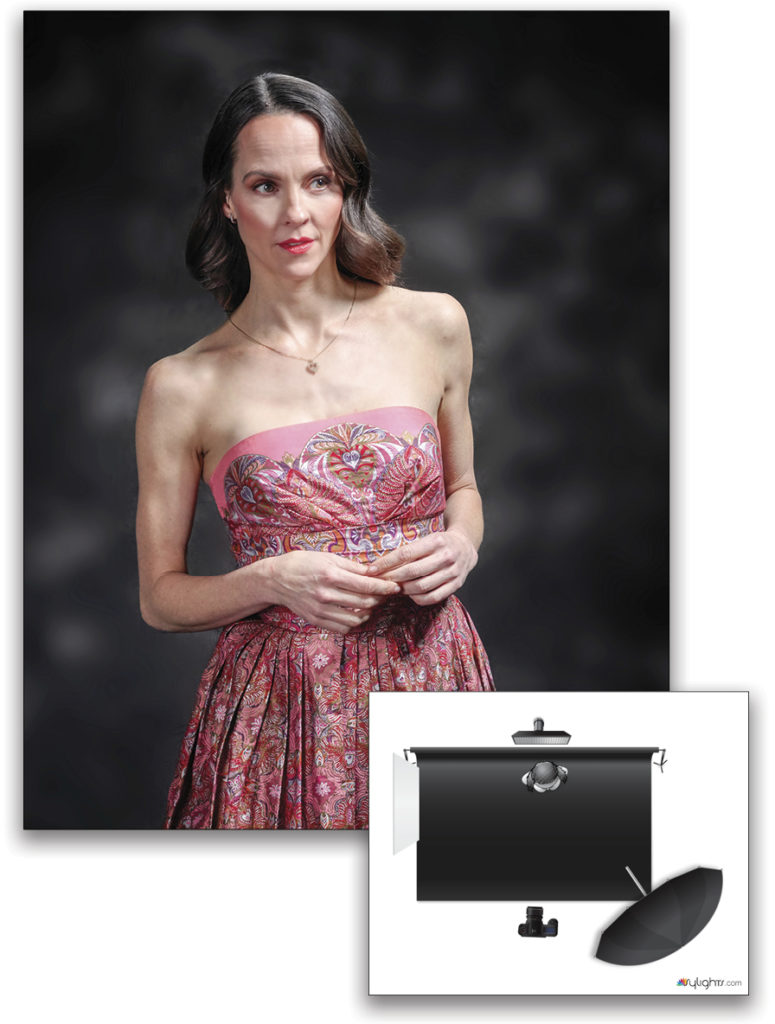
When working with someone who has acting experience, try to bring out the character for the story that you’re trying to create in your photos. Never hesitate to share your ideas with your model; I guarantee your photos will become works of art that have more dimension. Try it with the models you work with as well. Models are actors too, silent actors. Always take time to share your ideas and the story you’re trying to capture.
The Not So Obvious
Sarah is such a talented dancer, and while I love the action shots, I also enjoy the moments a dancer takes to focus, to think through the routine, and prep for her performance. Then there’s stretching: lots of flexibility work with technique. I like to show what’s not so obvious: the preparation, concentration, and a moment of reaching. This image was shot with the large Profoto umbrella attached to a D2 monolight at camera right, feathered across the front of her body so it enhanced her upper physique and incredible bone structure. A Profoto reflector was set camera left to soften the shadows. And then, of course, I used a hair light from behind and above.
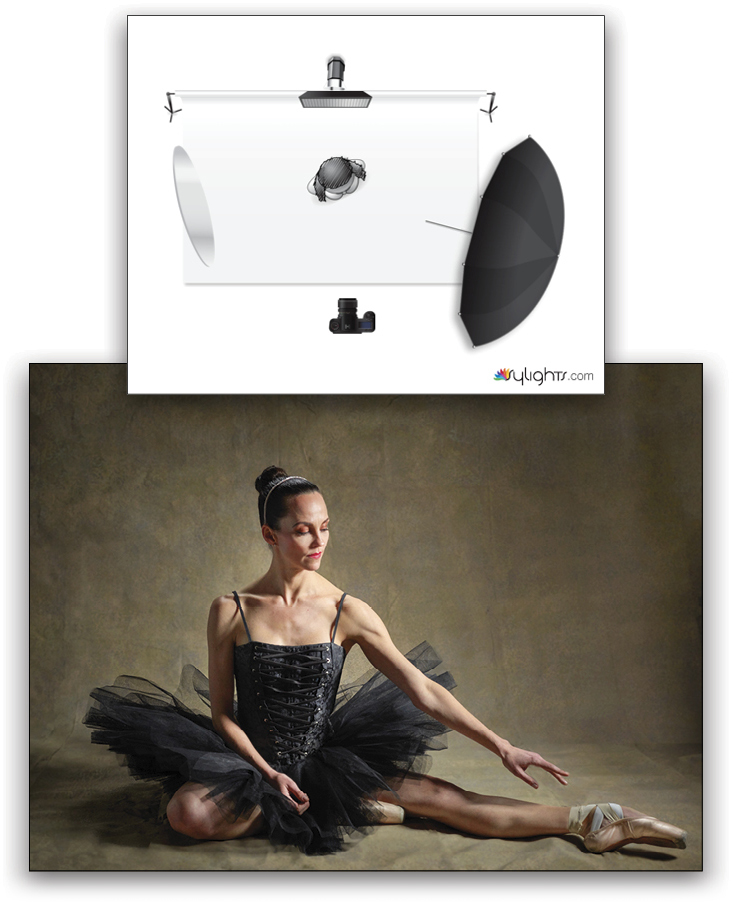
Day Two: Dancemakers Theatre
While I was waiting with my team to gain entrance to the Theatre, we walked around the outside of the Theatre and found these most amazing concrete columns. I felt we needed to start here before we went inside. The pillars added a metaphor to the story: with the beauty of a ballerina, there’s always strength and flexibility.
We shot this image of Sarah with a Profoto B2 portable unit attached to a portable Profoto Beauty Dish as a modifier, handheld by my assistant at camera right. We also placed a B1 unit with a Profoto Magnum Reflector behind the right column aimed at the back column, which was in the shadows, and I was attempting to match the ambient light in the foreground.
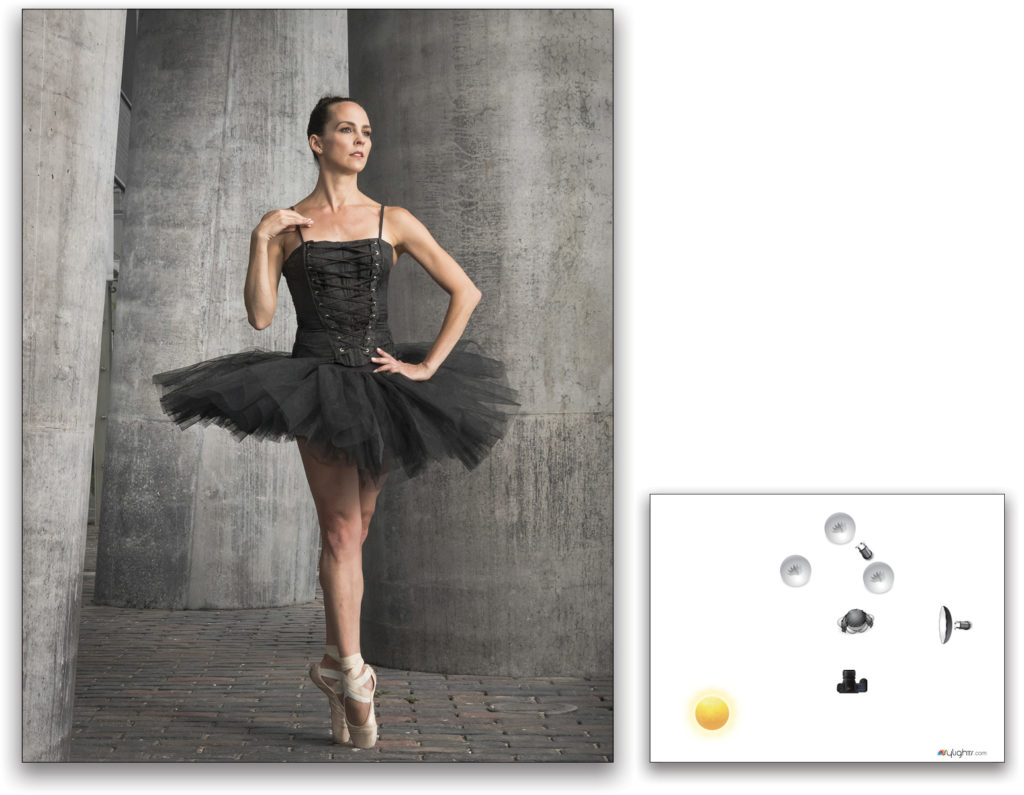
The Solo Duet
During our walk back to the studio, I had to get this shot! I did an edit in post to make the reflection black-and-white with an antique look to it. I call this The Solo Duet. There’s a story here, but I’ll save it for the next shot. I used the same Profoto B2 handheld attached to the portable Beauty Dish camera left and out of view of the reflection.
As I mentioned earlier, the Dancemakers can me made completely dark with curtains around the perimeter and a floor that’s completely black, plus it also has two great windows at 90° angles to each other. Using the windows, I was able to wrap the light around Sarah to create highlighted edges. I used the B2 with the Beauty Dish as a very mild fill from behind.
Between the Windows
For me, the story was about looking into the past. (The Distillery District is more than 100 years old.) I had the main window as the key light and desaturated it in post to create the feeling that I wanted.
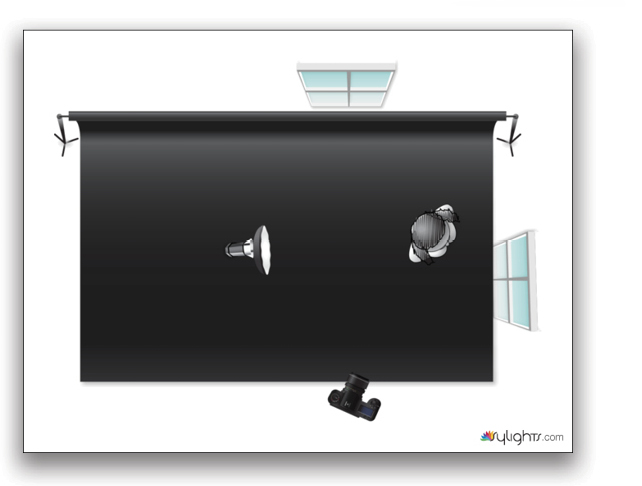
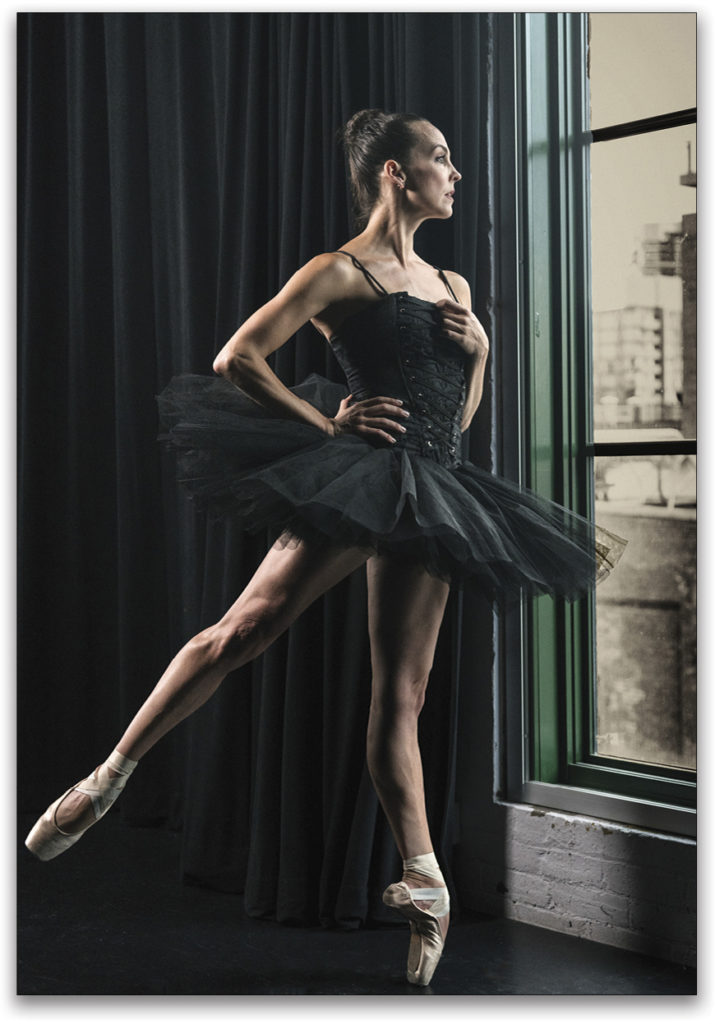
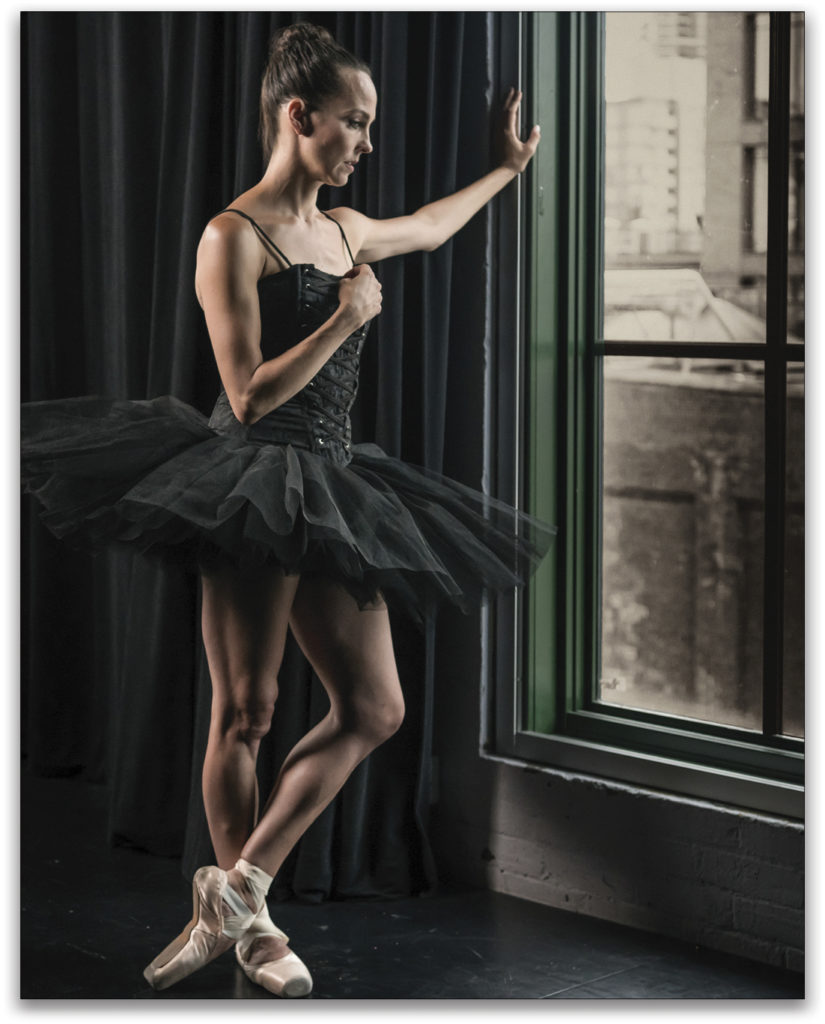
The Piano
This next image was my most difficult setup. I’ve used the piano as a prop before but never quite nailed it. This time, I had a different solution for the key light: a Chinese lantern that cost me all of $16. (Shop around; you can often adapt inexpensive items for a photo shoot.) I attached the lantern to the Profoto B2 unit and hung it on a C stand above the piano where Sarah was seated doing a stretch.
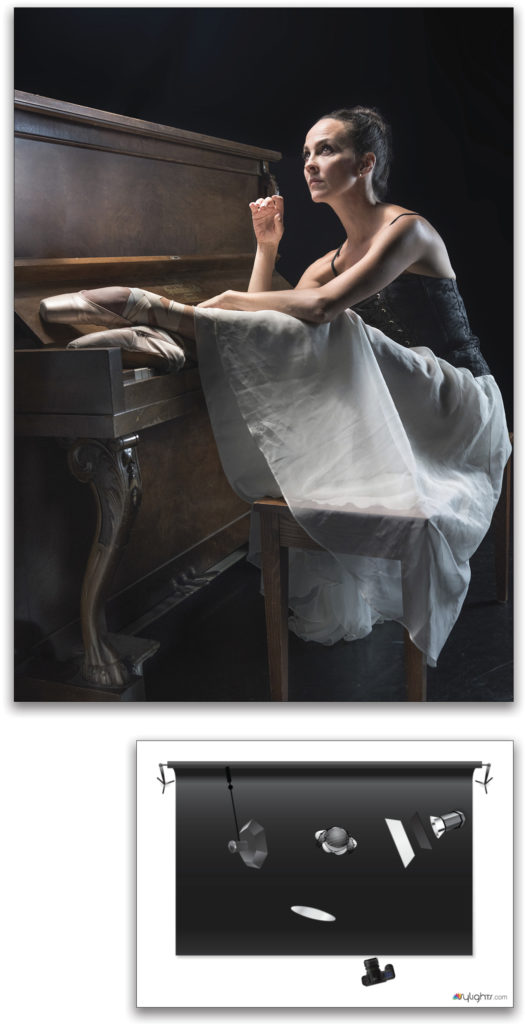
To me, this is a rehearsal story where the dancer is again contemplating and thinking through her next move, as well as taking a break. Ballet dancers are also silent actors. They express emotions through their movement; but a dancer with Sarah’s stature has the skill to emote through facial expression. I was talking to her constantly, suggesting things such as, “You’re thinking of the dance,” or “You’re resting here and reflecting.” She was easy to direct given her background and experience.
I also used a silver reflector aimed at the foreground and the shadow area of her legs. We put up an 8×8’ “silk” for the kicker placed directly behind her to emulate soft window light. This was lit by a Magnum Profoto Reflector with Profoto D2 so I could take the light down to about 20% of its 1000-Watt power. I just wanted a bit of separation. I flagged out a lot of the light to avoid a big reflection at the top of the piano.
Have Some Fun
Finally, we had some fun with color—strobes that were gelled with blue and a sodium gel mixed with something called White Flame Green, which is used a lot on nighttime film sets. I had no reason for this other than I was experimenting. We used two Profoto Reflectors at 45° behind the dancer with a Profoto D2 monolight attached to each, plus the Beauty Dish with a B1 attached as the key, but stopped down so the background would be highlighted by the smoke created by the fog machine.
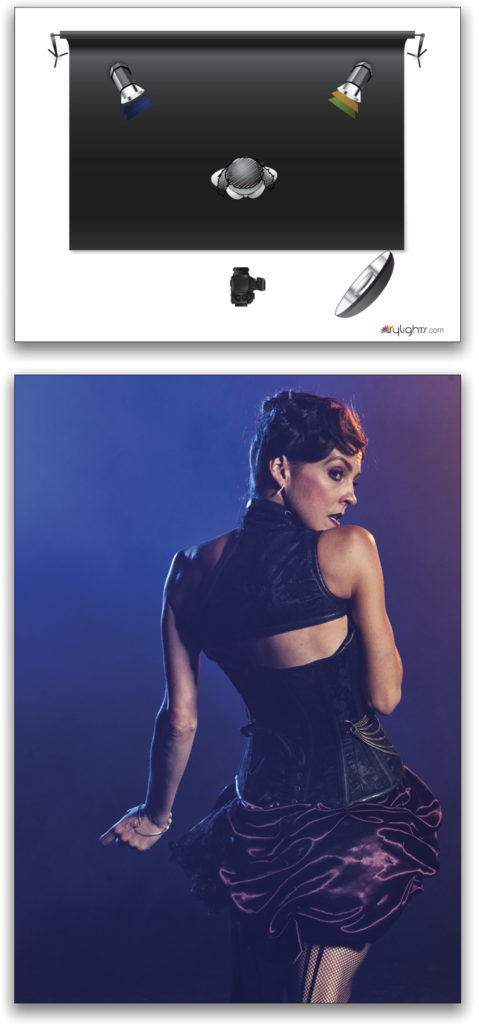
I played the song The End and other songs by The Doors to create a story; nothing too complex, but as Joe McNally once said to me, “Call this theater lighting.” Indeed it is.
